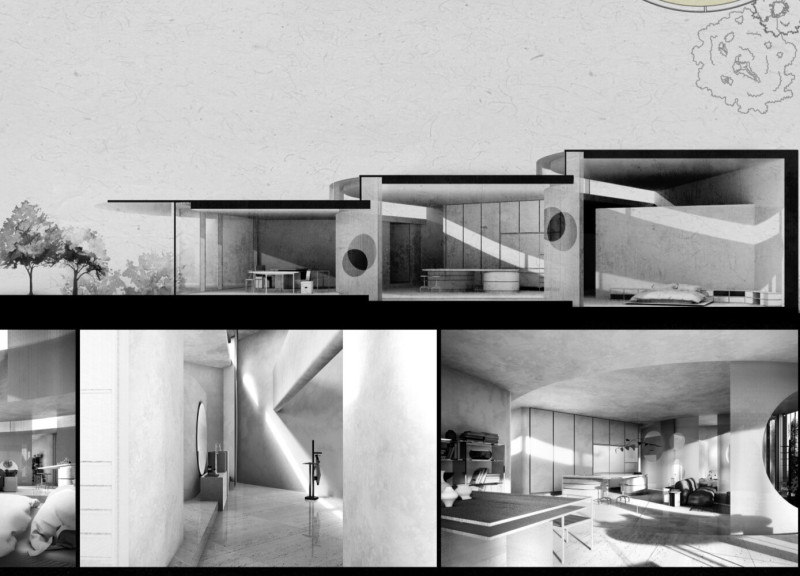5 key facts about this project
From the exterior, the project presents a cohesive façade that establishes a dialogue with its surroundings. The choice of materials is thoughtfully executed, emphasizing regional characteristics while integrating advanced building technologies. Predominantly featuring local stone and timber, the architecture reflects a commitment to sustainability and environmental stewardship. The stone provides durability and a sense of permanence, while the timber adds warmth and an organic touch, encouraging a connection between the building and its natural context.
The design approach prioritizes ample natural light and outdoor connectivity. Large, strategically placed windows dominate the façade, facilitating not only panoramic views of the surrounding landscape but also promoting energy efficiency through passive solar gain. This thoughtful integration of glazing enhances the interior experience, creating a bright and welcoming environment. The layout of the spaces within is carefully planned, with an open floor plan promoting fluid movement between the distinct functional areas.
Functionally, the building houses a variety of spaces tailored to its intended use, whether for residential, commercial, or mixed-use purposes. Each area is designed with the end-user in mind, considering the diverse needs that might arise within the context of daily life and activity. The zoning of spaces is intuitive, allowing for both privacy and communal interaction. Public areas seamlessly transition into private quarters, supported by circulatory paths that guide occupants through the structure without disruption.
Unique design elements further distinguish this project. For instance, an adaptive reuse approach has been employed, incorporating elements from the previous structures on site, thus honoring its historical significance. This respect for the past is reflected in the careful detailing and craftsmanship evident in the architectural finishes. The use of reclaimed materials not only contributes to sustainability but also instills a sense of narrative within the architecture, enriching the user's experience.
Landscaping complements the architectural design, enhancing the overall ambiance and providing functional outdoor spaces that encourage leisure and social interaction. Pathways are thoughtfully curated, leading visitors through various garden areas while ensuring accessibility for all. The landscape design aligns with the building's architectural intent, using native plants that require minimal maintenance and enhancing biodiversity.
In conclusion, the project embodies a comprehensive understanding of architecture as a discipline that balances functionality, aesthetics, and ecological responsibility. By engaging with its context and employing thoughtful design strategies, it manages to create an inviting space that serves its purpose while respecting the environment. Readers are encouraged to explore more about this architectural endeavor by reviewing the architectural plans, architectural designs, and architectural sections associated with the project to gain deeper insights into the innovative ideas and methodologies applied throughout its development.























